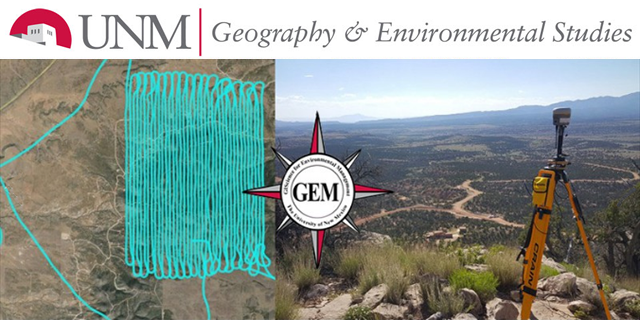
Geography ETDs
Publication Date
Summer 6-28-2021
Abstract
This thesis examined the geospatial and temporal grazing patterns of domesticated livestock to model individual-level exposure potential to abandoned uranium mine (AUM) waste in a tribal community in the Southwest United States. Lotek Litetrack Global Positioning System (GPS) collars collected data at 20-minute-intervals for 2 flocks of sheep and goats during the Spring and Summer of 2019. Depending on the flock and individual animals, tracking time ranges from 10 days to four months. This research developed a GIS-based exposure potential framework that built on existing methodologies in time geography, GIS, and exposure mapping. This thesis aims to: 1) classify GPS data from livestock into three behavior subgroups - grazing, traveling or resting; 2) estimate the potential environmental exposure for each animal, informed by behavior classifications, using GIS-modeling and parallel computing methods; and 3) quantify the uncertainty in both livestock behavior classification and modeled exposure potential. Results demonstrated no significant differences in individual cumulative exposure potential within each flock when behaviors were considered. When daily cumulative exposure potential was calculated without consideration of animal behavior, significant differences among animals within a herd were observed, which does not reflect animal grazing behaviors reported by livestock owners. Results suggest that the proposed framework more closely resembled hypothesized exposure potentials for animals within each flock that livestock within the same flock share similar cumulative potential environmental exposures, based on observation and livestock owner’s accounts. Therefore, this research demonstrated a reliable and robust GIS-based framework to estimate cumulative exposure potential to environmental contaminants. This research advances GIS-based research methods for spatial-temporal GPS analysis in conjunction with environmental health and provides critical information to address community questions on livestock exposure to AUMs. Results from the research may be used for future intervention and policy making on remediation efforts in communities where livestock grazing may encounter environmental contaminants.
Degree Name
Geography
Department Name
Geography
Level of Degree
Masters
First Committee Member (Chair)
Yan Lin
Second Committee Member
Xi Gong
Third Committee Member
Joseph Hoover
Document Type
Thesis
Project Sponsors
NIH (1P50ES026089) & USEPA (#83615701)
Language
English
Keywords
domesticated livestock; fuzzy logic; behavior patterns; cumulative exposure; time geography; GIS
Recommended Citation
Liu, Zhuoming. "Individual Exposure potential Assessment for Livestock Based on Spatial-Temporal Analysis of GPS Data and Behavior Patterns Classification in Cove Wash Watershed, Arizona." (2021). https://digitalrepository.unm.edu/geog_etds/53
Included in
Animal Studies Commons, Environmental Sciences Commons, Environmental Studies Commons, Geographic Information Sciences Commons


